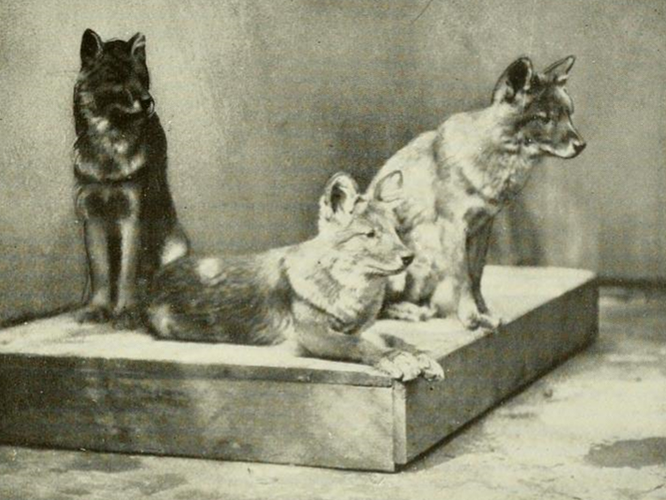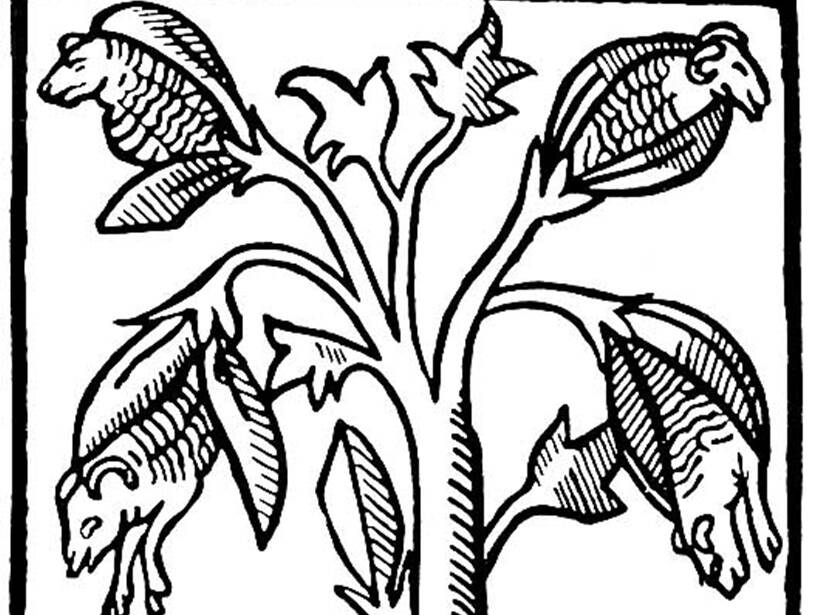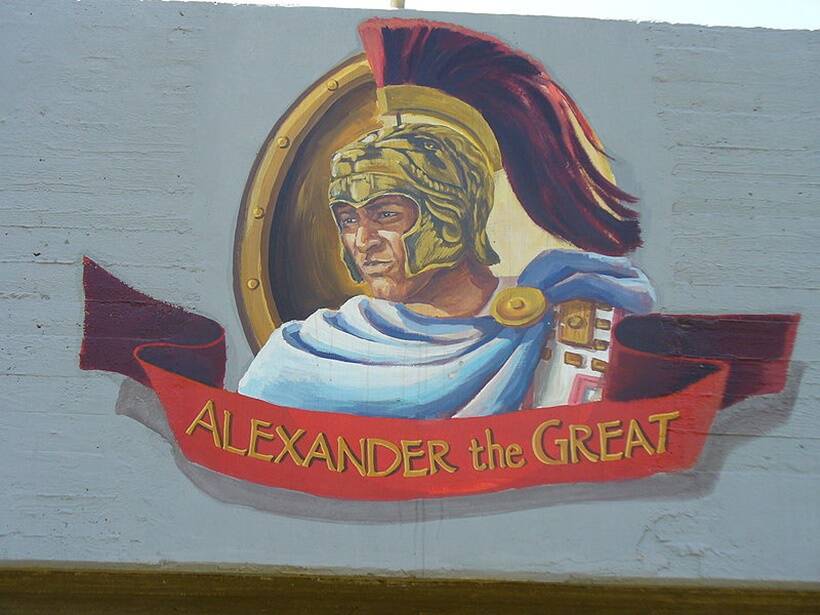Folks , 2,323 years is a very long time...this is a very compelling story of how the prime of the ancient Greek youth who came to South Asia as invaders , got completely absorbed and blended into the bloodlines of the Indian Subcontinent...today they are indistinguishable from the local population of the Northwestern regions :-
"The Great Alexander of the West had become the Great Sikandar of the land he marched through - till today a popular name for boys in those regions ."
**From a Hollow Earth perspective , this article has a very interesting comment :-
"Then there was a mention of ‘gold-digging ants that were larger than foxes in size"
When Alexander Reached the Indus (326-323 BCE)
There is an old story mentioned by the 2nd-century Greek historian Arrian -
Advancing with his army towards the great city of Taxila, Alexander chanced upon a group of holy men or sadhus who stamped their feet in front of him. On being asked about their odd behaviour, they addressed Alexander, “O King, every man can possess only so much of the earth’s surface as this we are standing on. You are but human like the rest of us, save that you are always busy and up to no good, traveling so many miles from your home, a nuisance to yourself and to others. Ah well, you will soon be dead, and then you will own just as much of this earth as will suffice to bury you.”
This dramatic encounter, probably more imagined than real, was prophetic. The charge of the Macedonian conqueror, which saw him take over a vast swathe of land from Greece to northwestern India and annihilate the mighty Persian empire, would be brought to an abrupt end in the land the Greeks called Caucasus Indicus or the ‘Hindu Kush’.
At 30, Alexander was spent after years of his gruelling march. His soldiers were even more tired, dejected, confused and desperate to get back home. But the brief encounter that Alexander would have with the land of the Indus would turn out to be a pivotal event in history as the great conqueror turned back, was attacked and humbled, and eventually died.
It was also a point where two great civilizations, that of the Greeks and the Indians, intersected. The encounter left a lasting impression in the way the West saw India - as a land of exotic wealth - and the way the subcontinent viewed the West. It is telling that even today, the very term for foreigners in Sanskrit is Yavana , a word first coined for Ionian Greeks!
3rd century BCE statue of Alexander in Istanbul Archaeology Museum |Wikimedia Commons
The Rise of Alexander
Alexander inherited the throne of the small kingdom of Macedonia, which the Greeks viewed as ‘barbaric’, at the age of 20 after his father Philip II was assassinated in 336 BCE. Philip had been ambitious but he was clearly even more so for his son. Before he breathed his last, he is believed to have said to Alexander, “Carve for yourself another kingdom, because the one I leave for you is too small.” Alexander took his father’s words to heart.
Before the 4th century BCE, Macedonia was a small kingdom outside of the area dominated by the great city-states of Athens, Sparta and Thebes. But even these city-states couldn’t match the might of the Achaemenid Persian Empire. Stretching from the Balkans and Eastern Europe in the west to the Indus Valley in the east, it was larger than any previous empire in history.
But the young and ambitious Alexander wasn’t daunted and he led an army against the Persian ruler Darius III and decisively defeated him in 331 BCE. Next, he turned towards the eastern provinces of the Persian Empire. After establishing a series of outposts in Afghanistan, he ventured further into the subcontinent.
Darius I of Persia commissioned Scylax of Caryanda to sail down the Indus river|Wikimedia Commons
Greeks were most definitely aware of the land they called India. The name was first used by them to refer to the country beyond the Indus. The earliest Greek explorer to visit India and write about it was a man named Scylax of Caryanda in 519-516 BCE, on the orders of the Persian emperor Darius I.
At this time, the northern part of the subcontinent was divided into sixteen Mahajanapadas or city-states, quite like those in Greece.
Alexander’s Trail in India
We know a lot about Alexander’s encounter with the subcontinent, thanks to the many Greco-Roman accounts. Some of these had been written by Alexander’s contemporaries who were a part of his military (though most of them don’t survive today). Other accounts came from later Greek historians and scholars who referred to the earlier sources and made notes. These accounts help us stitch together the story of Alexander’s exploits on the subcontinent. There are social commentaries, geographical narrations and interesting observations. Based on these accounts, here’s what happened.
When Alexander arrived in 327 BCE, the north-west of the larger Indian subcontinent was peppered with a number of principalities. Some indulged in long and bitter fighting, while some easily surrendered. For example, the walled city of Astes which was the stronghold of Assakenoi (Ashvakayanas) faced Alexander on the battleground. Another important mention is that of Alexander’s siege of the hill fort of Aornos, which according to Greek tradition, even Greek God Herakles had been unable to take it.
Geography during Alexander’s campaign|Wikimedia Commons
One of Alexander’s more famous encounters was with Ambhi, the King of Taxila. Roman historian Quintus Curtius Rufus’ 1st-century work Historiae Alexandri Magni describes the encounter. He mentions how Omphis (Ambhi) whose kingdom extended from the Indus to the Hydaspes (Jhelum), reached out to Alexander. Omphis, he says ‘ brought with him six and fifty elephants, and these he gave to Alexander, with great many sheep of an extraordinary size, and 3000 bulls of a valuable breed, highly prized by the rulers of the country.’ With this, he extended a hand of friendship.
Plutarch (c. AD 46 – c. 120 CE), in his Life of Alexander, writes that after welcoming Alexander, the king of Taxila said to him, “Why should we two fight with one another if you have come to take away from us neither our water not our necessary food - the only things about which sensible men ever care to quarrel and fight. As for anything else, call it money or call in property, if I am richer than you, what I have is at your service, but if I have less than you, I would not object to stand debtor to your bounty.”
Ambhi offering gifts to Alexander|Wikimedia Commons
Probably, this is why almost all Greek authors mention in their works that no Indian king has ever invaded another country as they consider it not in accordance with their moral values. Alexander is said to have been overwhelmed by Ambhi’s gesture and not only did he return his title and gifts, but also presented him with a wardrobe of Persian robes, gold and silver vessels, 30 horses and 1,000 talents in gold.
It was now time for Alexander to cross the Indus. It was 326 BCE. The rationale for his further campaigns was his desire to conquer the entire world, which the Greeks then thought, ended in India.
The Battle With Porus
Alexander’s army crossed the Indus and advanced into present-day Punjab in 326 BCE. Here he was faced by Porus (Puru or Paurava), who ruled the region lying between what the Greeks called the Hydaspes (Jhelum) and Acesines (Chenab). The Indian ruler was ready with an army to march against the foreign invader. The size of his army threatened the Macedonians.
On seeing the army, Alexander is said to have remarked, “I see, at last, a danger that matches my courage.”
The Battle of Hydaspes was a mighty one. Stormy weather made it worse. But Alexander’s men were able to defeat the Indian forces. When Porus was taken prisoner, the conqueror asked him how he wished to be treated. Porus replied, “Treat me like a king.”
This answer and Porus’s demeanor impressed Alexander so much that he made him an ally. He gave back his kingdom and further appointed Porus as satrap (governor). He also added to Porus' territory land he did not previously own, towards the south-east, up to the Hyphasis (Beas). Choosing a local ruler helped Alexander control these lands so distant from Greece.
‘Victory coin’ of Alexander minted in Babylon c. 322 BCE. Obverse: Alexander being crowned by Nike. Reverse: Alexander attacking king Porus on his elephant.|Wikimedia Commons
It is believed that Alexander, famed for founding cities in the lands he conquered, most notably Alexandria in Egypt, also founded two on opposite sides of the Hydaspes (Jhelum) river. One was named Bucephala in honour of his horse who had just died and the other was named Nicaea which means ‘victory’.
Arrian mentions that after defeating Porus, Alexander marched eastwards towards the Chenab River, and captured 37 towns: the smallest of these towns had 5,000 or more inhabitants. He also captured the area between the Chenab and Ravi. This, the Greeks thought was the end of the world. They believed that further east lay the Outer Ocean from where they would jump onto their ships, sail through the Indian ocean and return home to Babylon. But when the men were informed about an entirely new portion of the world past the Indus, it came as a shock to them. India was much bigger than any of them had thought!
Onesicritus, who was a helmsman in Alexander’s army, exaggerated and wrote that India was the third of the entire world!
Alexander was filled with a new zeal, to conquer even more land - the great unknown. Unfortunately for him, his army wasn’t. They were exhausted from years of travelling and campaigning. They were worn out and all they wanted was to go back to their families. They refused to go ahead. Also, rumours spread in the camp about the fierce nature of the armies that lay in the Indo-Gangetic plains.
Possible extent of the Nanda Empire under its last ruler Dhana Nanda (c. 325 BCE)
The army that they feared so much was that of Dhana Nanda, ruler of Magadha and head of the Nanda dynasty. Greek accounts call him Agrammes, who ruled over the Prasii (Prachya i.e the eastern people) and the Gangadirae (the people of the lower Ganga valley).
Rufus writes that Magadha had 20,000 horsemen, 2,00,000 footmen, 2,000 four-horsed chariots and 3,000 fighting elephants. Plutarch’s numbers go like this - 80,000 horsemen, 2,00,000 footmen, 8,000 war chariots and 6,000 elephants.
Meanwhile, in Alexander’s camp, the soldiers remained adamant. It is said that Alexander sulked for three days in his tent, but he eventually relented.
He turned back after praying to the Gods that no man might be able to overpass the limits which his expedition had reached.
He ordered his fleet to sail along the coast, himself returning by land with the army. Only a fourth of his military force remained.
The Macedonians retreated to the Jhelum and began their journey towards the Indus delta, leaving the territories conquered so recently in the hands of Indian rulers Ambhi, Porus and Abhisara. The areas lying to the west of Punjab were entrusted to satraps (governors) and Macedonian garrisons. On the way back, there were military encounters with ganas (republics) such as the Malloi (Malavas), Oxydrakai (Kshudrakas), Sibae (Shibi) and Agalassoi. Alexander died two years later in Babylon in 323 BCE.
Apart from details of Alexander’s military campaigns, the early accounts give us a fabulous peek into how the Greeks perceived this new land of the Indus, and beyond. The Macedonian army’s first encounter with the inhabitants of the Indus valley shocked them. The people, especially, the skin colour, was nothing like they had seen before. Until then, they only knew of their own kind who had lighter skin and that of the very dark ‘Aethiopians’ whom they had interactions with, in Egypt and North Africa. Interestingly, they settled on the theory that Indians were essentially Ethiopians, but had a significant infusion of Greek blood. This, they argued must have happened when Dionysus, the God of wine, invaded India!
3rd century CE Roman Mosaic ‘Triumph of Dionysus in India’
Arrian, in his 2nd century CE work Indica writes, “From the time of Dionysus to Sandracottus (Chandragupta Maurya) , the Indians counted 153 kings and a period of 6,042 years.”
He also writes, “In ancient times, Indians were nomads...they girt themselves in the skins of the beasts they killed and ate the bark of trees...until Dionysus arrived in their land. When Dionysus arrived, he founded many cities and established their laws...he also taught them to plow the earth once he gave them seeds himself...He also armed them with weapons for war.”
Legends aside, Alexander’s expedition introduced the Greeks to a whole new world, and their descriptions of it were often peppered with exaggeration. For example, Nearchus, who was the naval commander of Alexander’s army wrote about massive trees under which 10,000 people can lay in the shade. This most probably was a reference to the Banyan. He also spoke about trees that had a sweet bark and sweet fruits, which tasted almost like dates.
On the fauna, he was most impressed by the parrot, never seen by the Greeks until now. He wrote about how parrots have ‘a mysterious ability’ to copy human speech. This left Nearchus floored.
Then there was a mention of ‘gold-digging ants that were larger than foxes in size’.
Nearchus also attests to the advancement of medical science in India. He says that at one point when Greek physicians failed to provide remedies for snake-bite to Alexander, the king gathered Indian healers who were also able to cure other diseases and painful conditions.
Arrian, about 400 years later, quotes Nearchus as saying that Indians dye their beards of one hue or the other according to taste - white, blue, green, purple, red. He also mentions that Indians had seven castes - the highest is that of (1) Sophists or philosophers, followed by the (2) tillers of the soil, (3) herdsmen, (4) handicraftsmen and retail dealers, (5) warriors, (6) superintendents or inspectors and the last caste was of the (7) councillors of the state.
Rufus writes, “ ...they have men whom they call philosophers...They think it glorious to anticipate the hour of destiny, and arrange to have themselves burned alive when age has destroyed their activity...They regard death if waited for as a disgrace to their life...They think that the fire is polluted unless the pyre receives the body before the breath has yet left it.”
The world according to Greek geographer Strabo
Greek geographer Strabo in his Geographica written in about 20 BCE describes India as a ‘land of the bizarre.’ He writes of ‘horses with a head of a deer’, ‘men without mouths’, ‘men without noses’, ‘men with one eye’ and so on. Perhaps he can be forgiven for he had never actually visited India and fell prey to Chinese whispers, writing about what he had heard about India from travellers and previous accounts.
Around the time when Alexander left, northern India was in a state of political flux. Most of the Mahajanapadas had either collapsed or were a part of the Nanda Empire. The ones that were independent were seen as too weak. The time was ripe to unite the subcontinent.
Only a year after Alexander died, Chandragupta Maurya founded the Mauryan Empire in India in 322 BCE. It is said that the two may even have met! How they met and what impression they carried of each other can only be imagined!
Extent of Alexander’s Empire
Though Alexander died when he was just 32, unable to rule over the lands he conquered, he left behind a great legacy. First, as the Greek army retreated, his trusted men stayed back to lead new kingdoms and dynasties - from present-day Afghanistan to Egypt. He also took care of assigning his captured kingdoms to able generals. One of them was Seleucus Nicator whose daughter was given in marriage to Chandragupta. His ambassador in the Mauryan court was Megasthenes.
Culture, art, faith and history were shaped as the land that was carved by the sword came to be stitched together by the Greeks who stayed back. In fact, the greatness of Alexander may well lie not just in his ambition, but also his ability to choose the right men, who stayed back and became custodians and ambassadors of the ‘Greek’ way of life.
A thousand years later, the legend of Alexander was still alive in the East, inspiring other ‘Empire Builders’. Allauddin Khilji, the Sultan of Delhi, for instance, issued coins by the name ‘Sikandar al Sani’, referring to himself as the ‘second Alexander’.
The Great Alexander of the West had become the Great Sikandar of the land he marched through .
Regards


